It is impossible to walk around Old Town Prague without coming across the cinnamon-and-sugar sweet scent of trdleník. On street corners, in take-out windows and lining the edges of the main square you can find these little rolls of crispy, doughy goodness for about $2 .
While the treat has become hugely popular in the Czech Republic, many believe its origins actually lie in nearby Hungary. There it is called kürtőskalács, a name which has its root in the word used for a kitchen vent – probably because of the chimney-like shape the pastry has when it’s standing upright. In its original form, this chimney cake – as we call it – would have been roasted on a wooden spit over an open fire, likely brushed with egg yolk for sweetness. Today, however, it is more likely to be found rolled in sugar, lined with nutella and stuffed with ice cream. Whatever way you want to do it, here is how to make your own chimney cake at home:
Chimney Cake
DOUGH:
> 1 standard packet of yeast, or 2 1/4 teaspoons
> ½ cup milk, room temperature
> 2½ cups all-purpose flour
> 3 tablespoons sugar
> 2 eggs
> 4 tablespoons softened butter
GARNISH:
> ½ cup sugar
> 3 teaspoons cinnamon
> 2 eggs
> Nutella
> Jam
> Ice cream
Makes 6 – 8 pastries
PREHEAT oven to 375 degrees.
MIX yeast and ¼ cup milk in a small bowl. Let sit for 10 minutes until risen and bubbly. Combine flour, 3 tablespoons sugar, 2 eggs, 3 tablespoons butter and yeast mixture. Gradually pour in remaining ¼ cup milk.
KNEAD the dough on a floured surface until smooth, about 5 minutes. Place the dough in a bowl and allow to rise, covered, for 30 minutes.
CREATE four cylinders, slightly smaller than a mason jar, out of aluminum foil, while waiting for dough to rise. In a small bowl, crack remaining 2 eggs, keeping only the yolks, and mix with 2 teaspoons water. In another small bowl, combine cinnamon and sugar. Set all aside.
LAY out dough on the counter, once it has risen, and cut in half. Roll each half into a long, thin rope-like cylinder, about 12 to 14 inches long. Then cut in half again, making 4 total pieces about 6 to 7 inches long.
COAT each foil mold with a thin layer of remaining butter and then wrap the dough around them, pressing the dough slightly flat as you wrap.
SPREAD a thick layer of cinnamon and sugar out on your workspace. Using a pastry brush, cover the dough in the egg wash then roll it through the cinnamon sugar until well coated.
PLACE the dough wrapped molds on a baking sheet so that they are standing upright. The dough should not touch the baking sheet.
BAKE for about 15 minutes. Remove from oven and carefully slide warm pastry off foil molds.
SERVE warm. If you like, line the inside with Nutella or jam and stuff with ice cream.

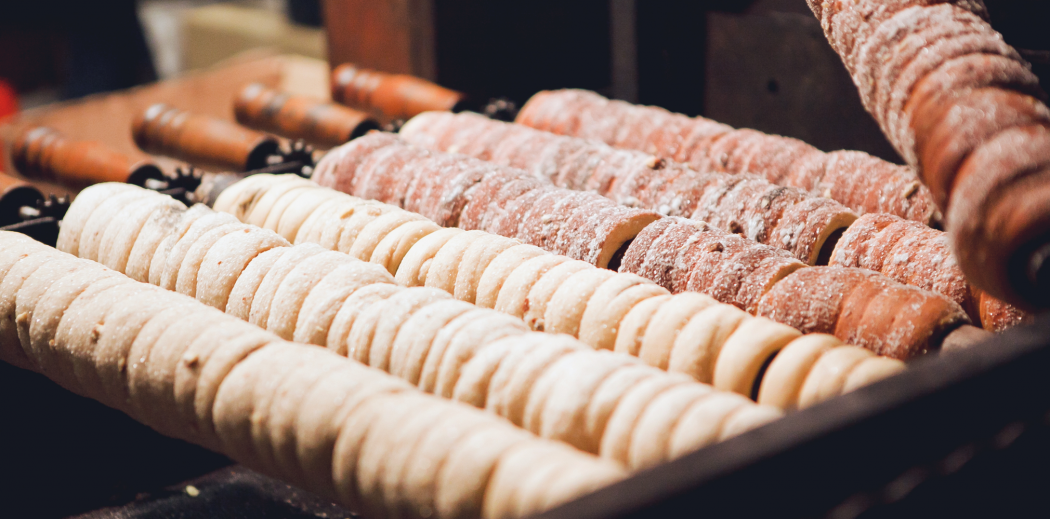
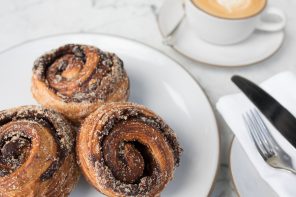


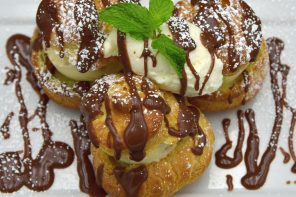
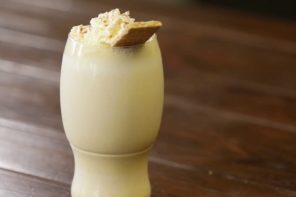

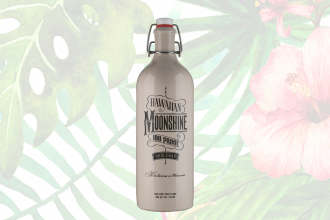
how much yeast?
Hi there, looks like the yeast slipped under the radar, thanks for letting us know! The recipe calls for 1 standard packet of yeast, which comes out to 2 1/4 teaspoons.
Thank you for telling me, I wouldn’t have known where to look 😉
The recipe does not say how much yeast.
All fixed now! The recipe calls for 1 standard packet of yeast, which is 2 1/4 teaspoons. Thanks for reading!
How much yeast do you use in the chimney cake? The recipe doesn’t list yeast in ingredients.
Yeast has been added back to recipe, thanks for catching that! The recipe calls for 1 standard packet of yeast or 2 1/4 teaspoons. Cheers!
I am having difficulty visualizing what I’m supposed to do in these steps: “CREATE four cylinders, slightly smaller than a mason jar, out of aluminum foil. COAT each foil mold with a thin layer of remaining butter and then wrap the dough around them, pressing the dough slightly flat as you wrap.” Can you explain? Or post a photo or two?
Hey Lynn, let me see if I can clear this up for you.
What we’re looking to do here is create something to wrap our dough around so that it will bake into the chimney-like shape that we’re looking for. The first thing to do is make our cylinder molds out of aluminum foil, they should be about 4 inches tall and 2 inches wide. Next you want to brush on a little bit of melted butter so that the chimney cake will slip right off the mold once it’s done baking. Then, after you’ve rolled out your dough, wrap the pieces around the molds, starting at one end and working up to the other so that the entire mold is covered in dough. Once this is done, press the dough into the mold to make sure it is set and won’t slip off in the oven.
Does this make a little more sense? Let me know, happy to explain further!
I think where the disconnect here is that the instructions state you need to make cylinders out of aluminum foil which is only part of the process. If you made a cylinder just out of aluminum foil it would not have any substance and collapse when wrapping the dough around it. You actually need to wrap the aluminum foil around something that is cylinder shaped. A rolling pin, a paper towel core, etc that can go into an oven.
The recipe nor your comment reference what the base for your cylinder should be. It would be extremely helpful if the recipe was updated with additional instructions.
Hey Chris! You are exactly correct. We would recommend you bunch up some of the aluminum foil to form your base, then wrap another layer of foil around it to keep it all together. Happy baking!